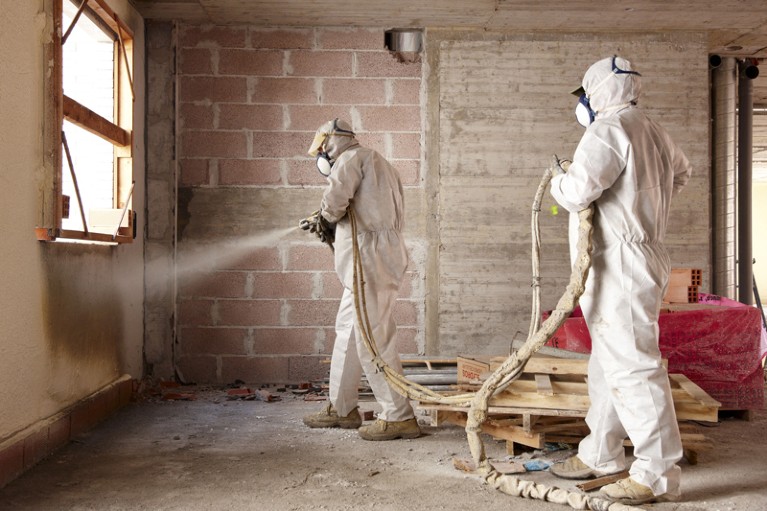
A rogue source of CFCs has been blamed on Chinese foam manufacturers but investigations continue.Credit: Javier Larrea/Getty
After three decades of being lauded as pioneers in successful environmental stewardship, officials who safeguard Earth’s ozone layer are facing an unexpected crisis: how to identify and cut off a rogue new source of ozone-destroying chemicals (S. A. Montzka et al. Nature 557, 413–417; 2018). If not stopped, the emissions of CFC-11 might delay by several decades the healing of ozone holes that appear at high latitudes early each spring. As expected, the issue featured heavily at last week’s meeting in Vienna of the Open-Ended Working Group (OEWG) of the Montreal Protocol, which protects the ozone layer. Since the protocol’s launch in 1987, countries have curbed the use of ozone-depleting chemicals in refrigeration and other industrial processes.
Ahead of the meeting, media reports and an analysis by the London-based Environmental Investigation Agency — a non-governmental organization with observer status in the Montreal Protocol — used interviews with company executives and information contained in advertisements to suggest that foam-manufacturing companies in rural China are to blame. Chinese delegates in Vienna made it clear that they take the matter seriously and, by all accounts, the issue has gone up to the level of Chinese President Xi Jinping. But they remained extremely reluctant to concede any serious wrongdoings on the part of Chinese companies, or government negligence in their oversight. This is understandable given that there is not yet definite evidence concerning the sources, quantity, duration or nature of the rogue emissions.
The suspicion that Chinese factories are the main — perhaps the sole — source of the damaging CFC-11 chemicals cannot be dismissed. But for now, increased vigilance must apply to the whole of South and East Asia. To pinpoint the source of the rogue emissions precisely, members of the Montreal Protocol’s scientific assessment panel are working to analyse the most recent data from the region’s atmospheric monitoring stations, including those of South Korea and Japan. Governments must make available, without delay, any data required for further analysis, and should also provide any other intelligence, such as that from commercial register entries, advertisements or customs, that could help to pin down any source of the emissions. The issue is a test of the strength and muscle of the Montreal Protocol regime, which must mobilize all the pieces — science, monitoring, verification and, possibly, sanctions. Already, four years have elapsed since scientists observed and reported the worrying CFC spike. What’s needed now, besides enduring vigilance, is a rapid political and institutional effort.
There is no doubt that China has, over the past few years, stepped up its environmental efforts, including those tackling air pollution and greenhouse-gas emissions. If Chinese sources of CFC-11 production are confirmed, the government should engage its full enforcement capacity to stop it immediately. Ironically, the current crisis is an opportunity for China to demonstrate its emerging leadership in the enforcement of global environmental policies. If the Montreal Protocol survives this test, the most beneficial environmental pact the world has ever undertaken will surely emerge stronger than ever.

 Nations agree to ban refrigerants that worsen climate change
Nations agree to ban refrigerants that worsen climate change
 Antarctic ozone hole is on the mend
Antarctic ozone hole is on the mend
 Ozone-hole treaty slowed global warming
Ozone-hole treaty slowed global warming

